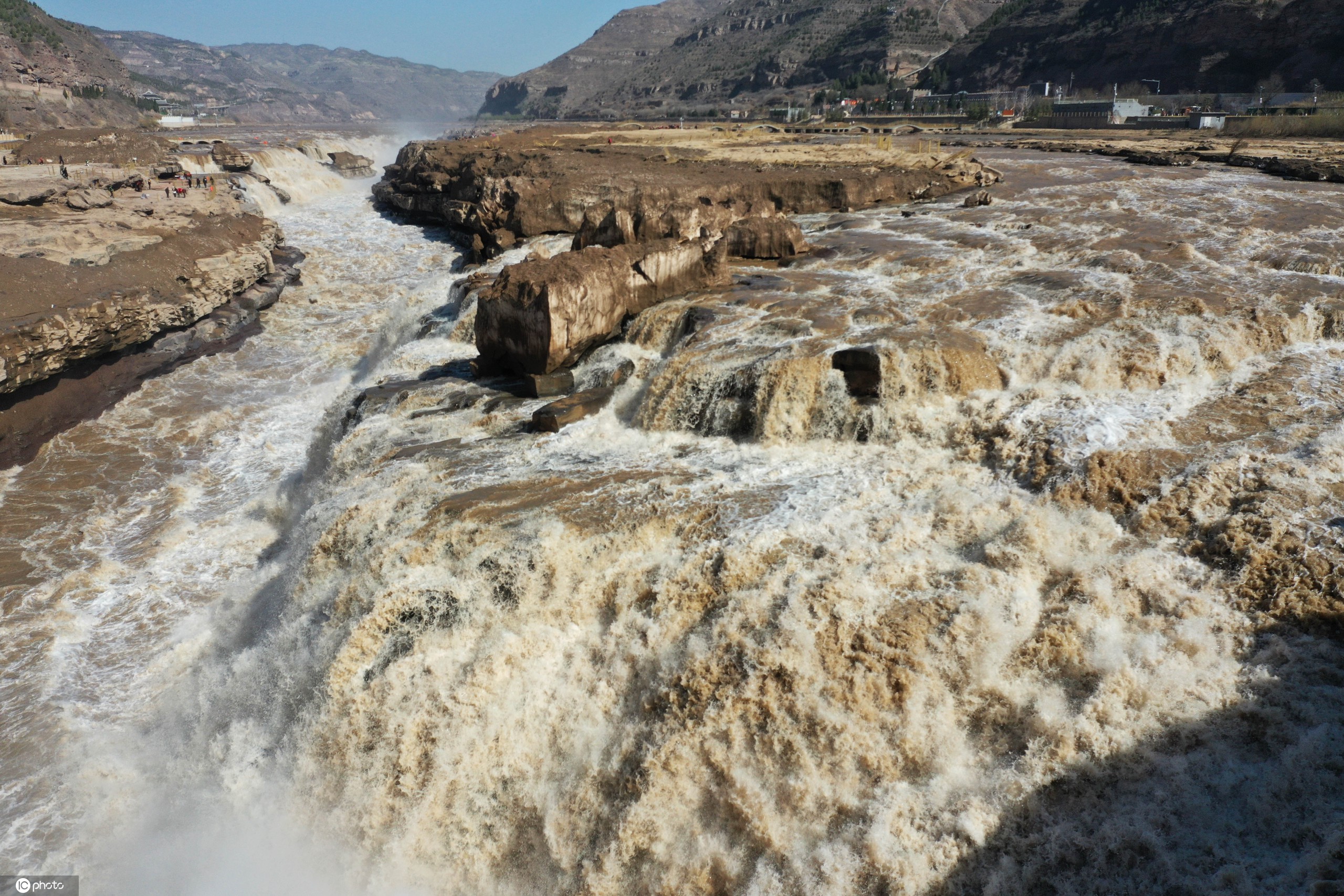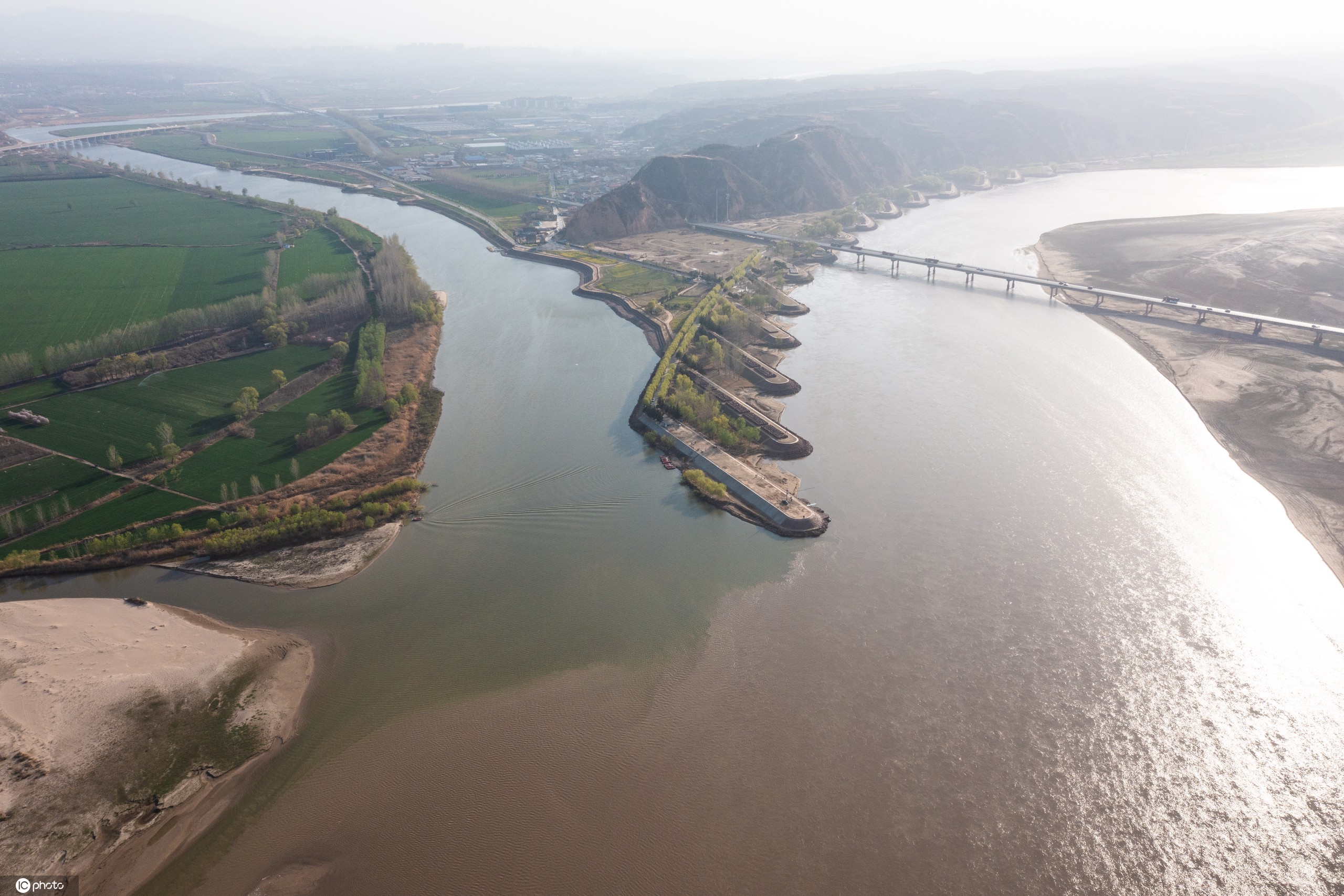In pics: Ecological advancement of Yellow, Yangtze rivers
Editor's note: This week marks the start of China's 36th water conservation week campaign. The theme of this year's campaign is "strengthening law-based river regulation and jointly protecting the mother rivers of the Chinese nation," which highlights the effective enforcement of related laws and includes a series of nationwide activities to raise public awareness on water conservation and utilization.
Over the years, China has made significant headway in protecting the ecological environment along the Yellow River and Yangtze River, improving water quality, reducing soil erosion and promoting biodiversity. It has also rolled out a nationwide "river chief" scheme to combat water pollution, introduced fishing bans to protect fishery resources, and digitalized water conservancy infrastructure to facilitate green development.
Here, China.org.cn introduces some of the most notable progress via photos.

The Hukou Waterfall on the Yellow River in Shaanxi province, March 13, 2023. [IC photo]
Since 2002, China has been carrying out water diversion and sand management projects for the Yellow River backed by scientific research and experiments. Under a unified water allocation system, the river has provided over 670 billion cubic meters of water for its basin areas and beyond.
As of the end of 2022, the Yellow River has seen no flow interruptions for 23 consecutive years, and the ecological environment along its lower reaches has been significantly improved.

An aerial photo shows the Yiluo River joining the Yellow River in Zhengzhou, Henan province, March 19, 2023. [IC photo]
According to a report released by the Yellow River Conservancy Commission, in 2020, the area of soil erosion in the Yellow River Basin decreased by 202,300 square kilometers, or 43.51%, from 1990 when the State Council conducted the first soil erosion survey. Meanwhile, intense soil erosion reduced by 81.70%.
Data also shows that the soil and water conservation rate in the Yellow River Basin increased from 41.49% in 1990 to 66.94% in 2020.

A ship sails in the waters of Zigui county, Xiling Gorge, one of the Three Gorges along the Yangtze River, in Yichang, Hubei province. [IC photo]
Thanks to measures such as the implementation of green manufacturing, stricter supervision of sewage outfalls into rivers and a 10-year fishing ban, the Yangtze River has seen a significant improvement in its water quality.
According to statistics from the Ministry of Ecology and Environment, in 2021, among the 1,017 water sections examined in the Yangtze River basin, 97.1% were classified as "good quality," up 1.2 percentage points year on year. In 2022, the quality of water in 98.1% of the Yangtze's sections had reached Grade II, the second-highest level in China's five-tier water quality system.

Two finless porpoises, known as the "giant panda of the water," are seen in the waters downstream of the Gezhouba Dam on the Yangtze River in Yichang, Hubei province, March 15, 2023. [IC photo]
Continuous improvements to the ecological environment in the Yangtze River Basin have also led to increased biodiversity. An investigation by the Ministry of Agriculture and Rural Affairs in 2022 showed that the number of Yangtze finless porpoises has increased to 1,249, a 23.42% rise from five years earlier. At present, China has created 13 nature reserves in the Yangtze River Basin for finless porpoises, covering about 40% of the porpoises' river habitat and effectively protecting nearly 80% of the population.
Other aquatic bioresources in key waters of the Yangtze River have also recovered. As of 2022, 193 varieties of fish were recorded in the area, marking an increase of 25 varieties from 2020.

A flock of white cranes in the conservation area of Poyang Lake, China's largest freshwater lake, in Nanchang, Jiangxi province, Feb. 22, 2023. [IC photo]
Local authorities in east China's Jiangxi province have been working to restore the ecological function of Poyang Lake by reclaiming wetland previously used for other purposes. During the 13th Five-Year Plan period (2016-2020), a total of 2,000 mu (about 133.33 hectares) of farmland was turned into wetland, and around 75,000 mu of wetland was restored.
The area has now become a paradise for migratory birds due to its suitable natural habitat and abundant food supplies. Today, more than 680,000 migratory birds of 63 species flock to the region to spend the winter.






